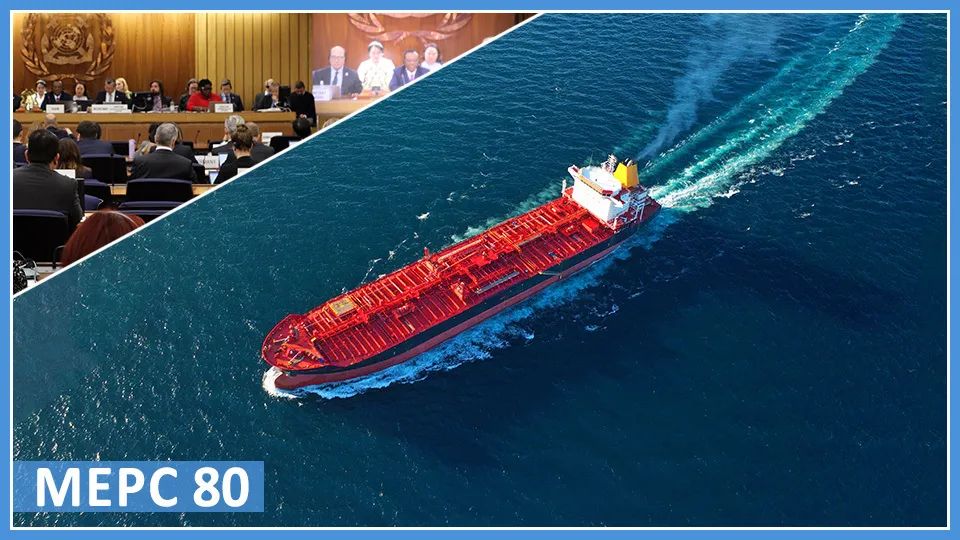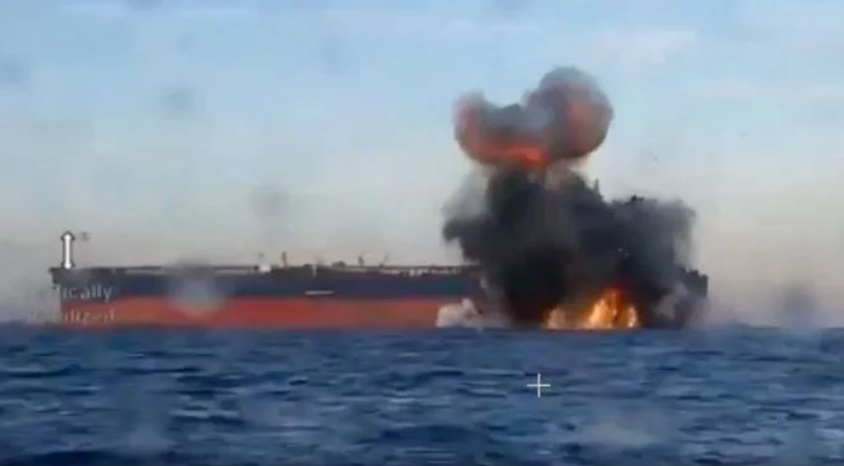
A functioning CII framework is a matter of urgency for the shipping industry.
Regulation 28.11 of MARPOL Annex VI specifies that a review of the CII regulations and associated guidelines shall be completed by 1 January 2026, including an assessment of the need for reinforced corrective actions or other means of remedy and the need for enhancement of the data collection system.
A review has now been initiated with the approval of a review plan.
Plan for review of the short-term GHG measures
The 80th session of IMO’s Marine Environment Protection Committee (MEPC 80) has initiated the review of the short-term measures, ie the Carbon Intensity Indicators (CII), Energy Efficiency Existing Ship Index (EEXI) and Ship Energy Efficiency Management Plan (SEEMP), by approving the plan for such a review.
The scope of the review will, among other things, include experiences with enforcement of short-term measures by Flag States and Port State Control (PSC), the CII metrics (currently Annual Efficiency Ratio (AER)), as well as correction factors and voyage adjustments for CII.
The review will be carried out in three phases:
·From now until MEPC 82 (to be held in autumn of 2024) the focus will be on data gathering
·MEPC 82 will initiate a data analysis, which will be continued by a correspondence group until MEPC 83 (to be held in spring of 2025)
·A working group scheduled to meet in late 2024 or early 2025 will begin the review of the regulations in MARPOL Annex VI and the associated guidelines.
Data to facilitate the review
MEPC 80 also approved changes to datapoints that shall be submitted annually to the IMO Ship Fuel Oil Consumption Database. The changes are expected to be adopted by MEPC 81 in April next year. However, these changes may not enter into force in the autumn of 2025 at the earliest, with application for the calendar year 2026. Therefore, data containing the new datapoints will not be available for consideration in the second half of 2027. Meanwhile, the review of short-term measures according to MARPOL Annex VI has to be concluded by 1 January 2026.
Consequently, Flag States and other stakeholders, such as international organisations representing shipowners and/or charterers, are invited to collect data to facilitate the review process and submit it to IMO no later than by MEPC 82 in the autumn of 2024.
BIMCO will work together with other industry organisations to facilitate the review process in an attempt to support a metric, as well as limiting the CII to fuel consumption that is within the control of the shipowner or the charterer, that will lead to commercial business practices, which lower CO2 emissions for the shipping sector.
The ship with the best AER would be the ship always trading in ballast condition without any cargo onboard
With the present CII metric, the ship with the best AER would be the ship always trading in ballast condition without any cargo onboard. As a result, the current metric penalises efficiently operated ships carrying cargo, while favouring inefficiently utilised empty ships. Whereas the metric AER favours ships in ballast condition, the voluntary metric currently used for trial purposes – the Energy Efficiency Operational Indicator (EEOI) severely penalises them. Neither is appropriate. Ballast condition is an integral part of ships’ normal operation and should neither be favoured nor severely penalised.
Deduction of fuel oil consumption when the ship is not underway from the calculation of the attained CII
The inclusion of fuel consumption when the ship is not underway in the calculation of the attained CII also pose challenges for a functioning CII framework because:
MEPC 80 also approved changes to datapoints that shall be submitted annually to the IMO Ship Fuel Oil Consumption Database. The changes are expected to be adopted by MEPC 81 in April next year. However, these changes may not enter into force in the autumn of 2025 at the earliest, with application for the calendar year 2026. Therefore, data containing the new datapoints will not be available for consideration in the second half of 2027. Meanwhile, the review of short-term measures according to MARPOL Annex VI has to be concluded by 1 January 2026.
Consequently, Flag States and other stakeholders, such as international organisations representing shipowners and/or charterers, are invited to collect data to facilitate the review process and submit it to IMO no later than by MEPC 82 in the autumn of 2024.
BIMCO will work together with other industry organisations to facilitate the review process in an attempt to support a metric, as well as limiting the CII to fuel consumption that is within the control of the shipowner or the charterer, that will lead to commercial business practices, which lower CO2 emissions for the shipping sector.
The ship with the best AER would be the ship always trading in ballast condition without any cargo onboard
With the present CII metric, the ship with the best AER would be the ship always trading in ballast condition without any cargo onboard. As a result, the current metric penalises efficiently operated ships carrying cargo, while favouring inefficiently utilised empty ships. Whereas the metric AER favours ships in ballast condition, the voluntary metric currently used for trial purposes – the Energy Efficiency Operational Indicator (EEOI) severely penalises them. Neither is appropriate. Ballast condition is an integral part of ships’ normal operation and should neither be favoured nor severely penalised.
Deduction of fuel oil consumption when the ship is not underway from the calculation of the attained CII
The inclusion of fuel consumption when the ship is not underway in the calculation of the attained CII also pose challenges for a functioning CII framework because:
·ships are penalised for time spent at ports despite the fact that the length of port calls is completely outside the control of the ship. The duration of port calls depends on the efficiency and limitations of the port or terminal. The CII regulations offer no incentives to ports and terminals to improve their efficiency
·ships engaged in short sea shipping are penalised because the nature of the trade includes significantly more port calls compared to long haul trades
·in periods of reduced demand and consequential oversupply of ships, some ships will wait at anchorage for long periods until new orders are received. This waiting time at anchorage results in a deterioration of the ship’s attained CII
·some ports and terminals are notorious for congestion, meaning that ships have to wait at anchorage for prolonged periods of time before being able to load or unload their cargo. This leads to some trades being disproportionally impacted by the CII framework to such a degree that they could be characterised as inferior trades.
Source: BIMCO
Source: BIMCO
The opinions expressed herein are the author's and not necessarily those of The Xinde Marine News.
Please Contact Us at:







